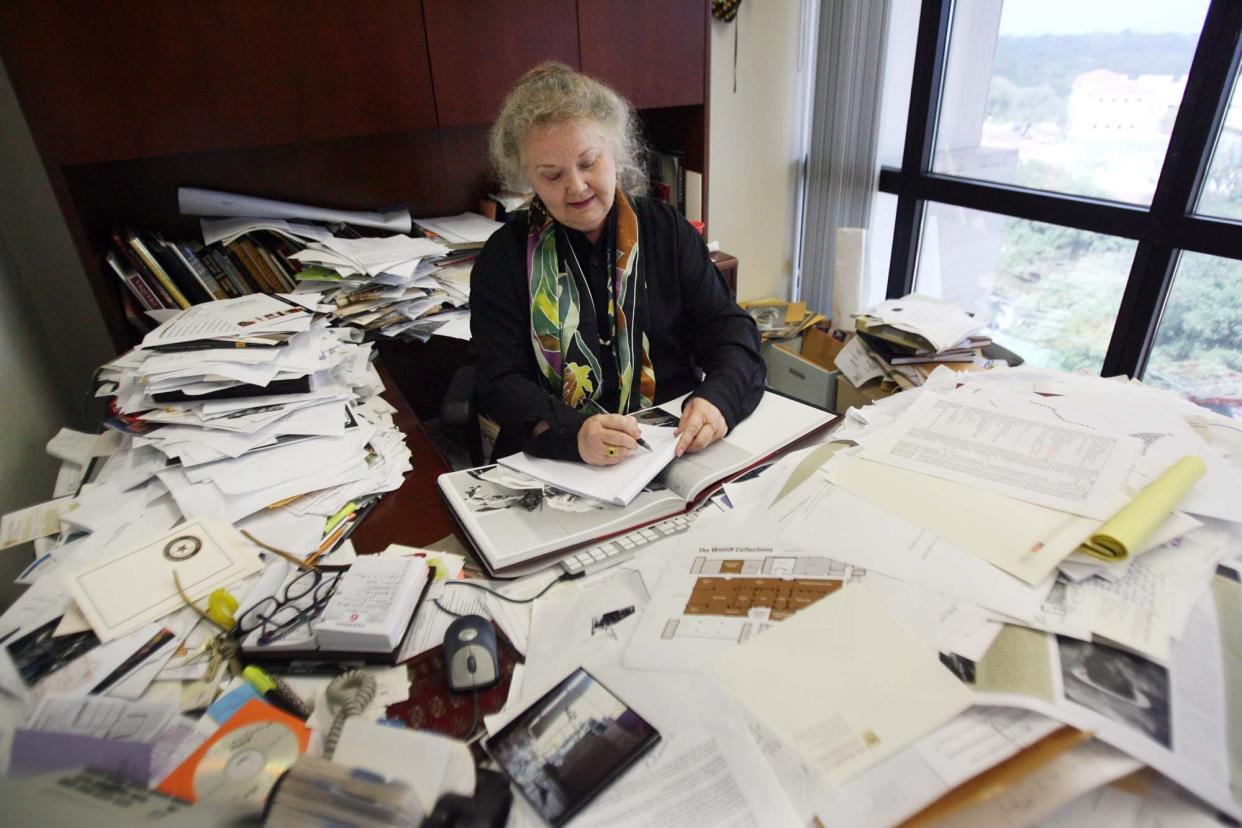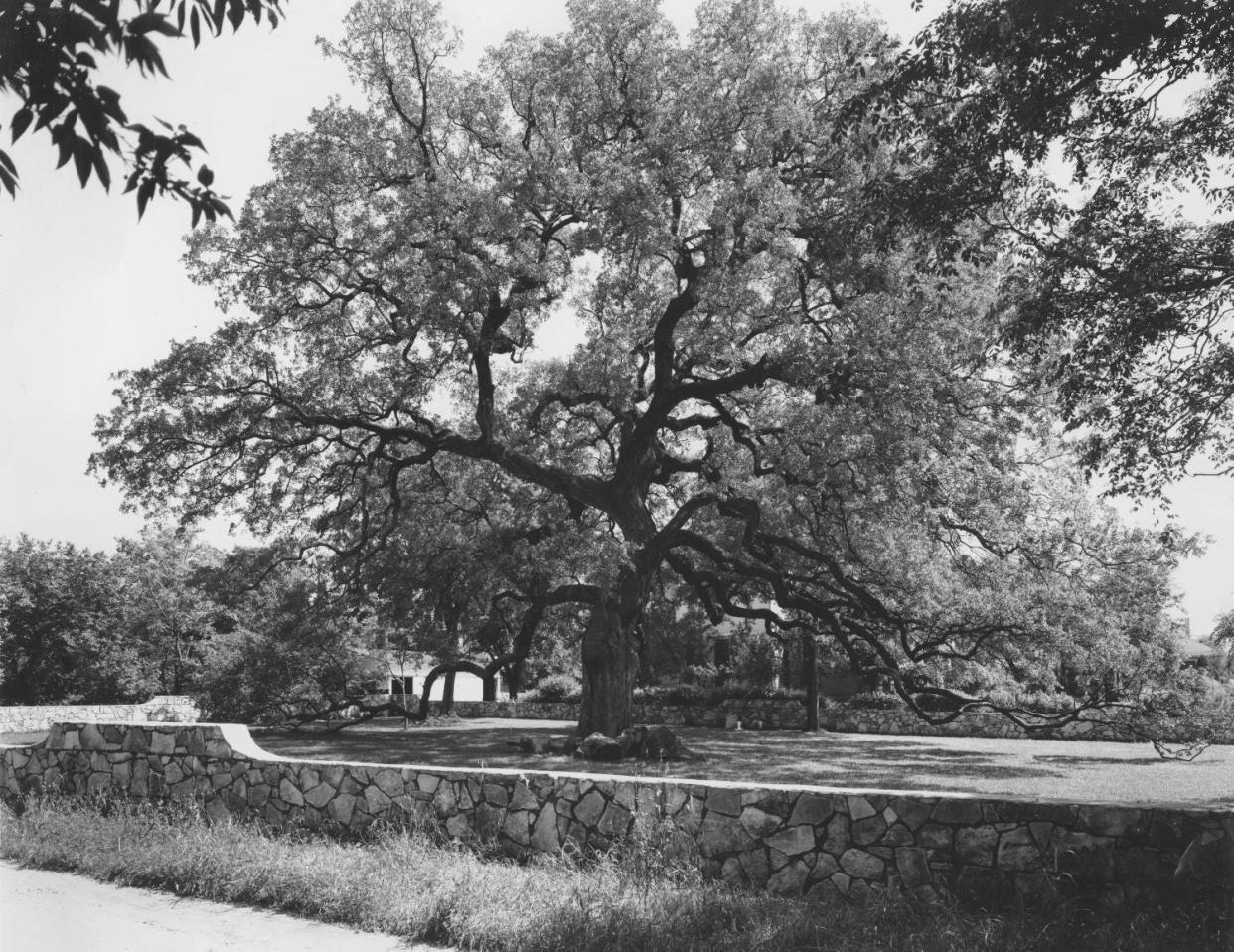Who found that Treaty Oak was sick in 1989? Clue: She had view from her office window

One of the perks of the Austin Answered column: Everybody gets to speak.
On March 15, my colleague Briana Moreno-Paz and I reported that the iconic Treaty Oak had been the victim of fresh vandalism. By the time the story came out, arborists had already begun to heal the ancient tree at Baylor and East Fifth streets which had suffered clear hacking wounds. Kanya Lyons, spokeswoman for the Austin Parks and Recreation Department, said that the gruesome act has been reported to the Austin Police Department.
On March 22, however, the police announced that they had suspended their investigation for want of leads. There had been no arrests or identified suspects, but the case would be reopened if a suspect is positively identified.
Anyone who has dipped into Austin history knows this was not the first act of violence against the tree. In 1989, in a story that made international news, Treaty Oak almost died because convicted vandal Paul Cullen used the herbicide Velpar to poison it.
In our March 15 report, we repeated an historical error, that the 1989 poisoning of the tree, sacred to Native Americans and newcomer Texans alike, had been discovered by a city forester.
Right on time, on March 22, Sheri Graner Ray, a game designer, author and speaker, helped update that part of our story.
"The poisoning was discovered by my mother-in-law, Connie Todd," Ray wrote. "Todd worked for the Encino Press in a building directly across the street from the Treaty Oak. She could see the tree from her desk and was quick to notice when the tree began to show signs of stress. She is the one who alerted the city to the problem. She placed a call to the city arborist and they came out later that day. They would not have been there that day had she not called."
Encino Press was the labor of love for the late Bill Wittliff — publisher, screenwriter, novelist and film producer — along with his surviving wife, Sally Wittliff, with whom he founded the peerless Wittliff Collections at Texas State University in San Marcos. Their offices stood in a Victorian building at the corner of Baylor and West Sixth streets above the essential Stephen L. Clark Gallery, which as since moved next door to 508 Baylor St.

What does Connie Todd remember about the Treaty Oak poisoning?
It took some time to connect with Connie Todd, who worked for the Wittliff Collections after Encino Press, but when we did, her story was something we had to share. (Back in 1989, she had spoken, it turns out, with journalist and author Stephen Harrigan for a story published in Texas Monthly. Bless archival projects like that of our friendly rival, which allowed us to verify that!)
"My office was on the second floor and I had a perfect view of the beautiful oak," Todd writes the American-Statesman. "I tend to notice things like this for some reason and began to see that the leaves on the tree were looking droopy. I immediately began to worry about oak wilt, much in the news back then, but when I looked more closely, I could see that it was not wilt but definitely something serious."
She immediately called John Giedratis, the city forester and because he and his wife had been married under the tree, he was particularly interested in it.
"If he hadn't responded right away, I was ready to call the newspapers and other media, but thank goodness he got busy in a flash. That was when they diagnosed the poison that had been poured on the tree — hard to believe! — and began to treat it. They flooded the ground with water, removed some branches, put up an enormous sun shade, and basically saved the tree, although it's shape was never the same."
Todd had a front-row seat for a procession of public reverence for the ailing tree.
"Monks came by in their saffron robes and prayed for the tree, hundreds of little school kids left notes for the tree. It was all very sweet and supportive," she writes. "The tree, although weakened, seems to have survived its ordeal, although I haven't checked on it for quite some time. The city planted seedlings from the tree in front of Bill Wittliff's office on Baylor, and somehow a couple of Monterrey oaks showed up at one of my rent houses. I wish I had gotten my own seedling.
"Anyhow, I do think that if I hadn't sounded the alarm when I did, the outcome might have been more tragic. So glad I could play a small part in the history of such a tree."
More Austin Answered
Did you go there?Help us name a lost Austin bar on East Sixth Street
We built this city. What were the material building blocks of early Austin?
Where was the old St. David’s Hospital?We know of at least three locations.
Send your questions — or answers — about Central Texas past and present to "Austin Answered" at mbarnes@statesman.
This article originally appeared on Austin American-Statesman: If not for Connie Todd's alertness, Treaty Oak tre might have died
